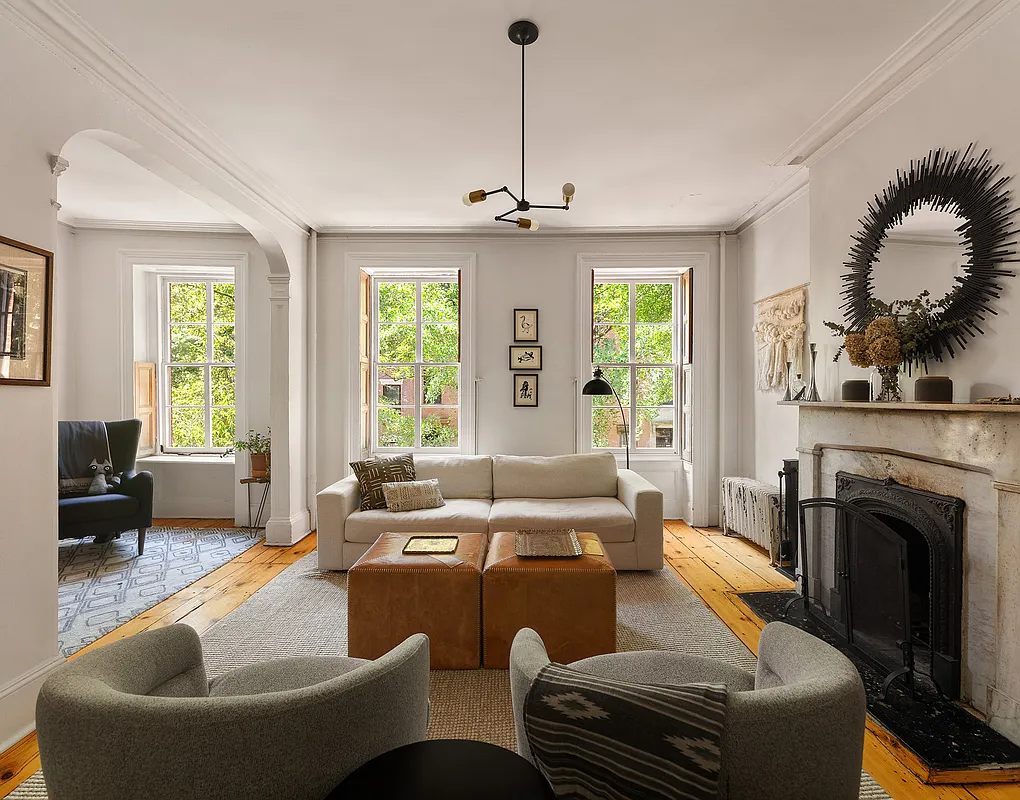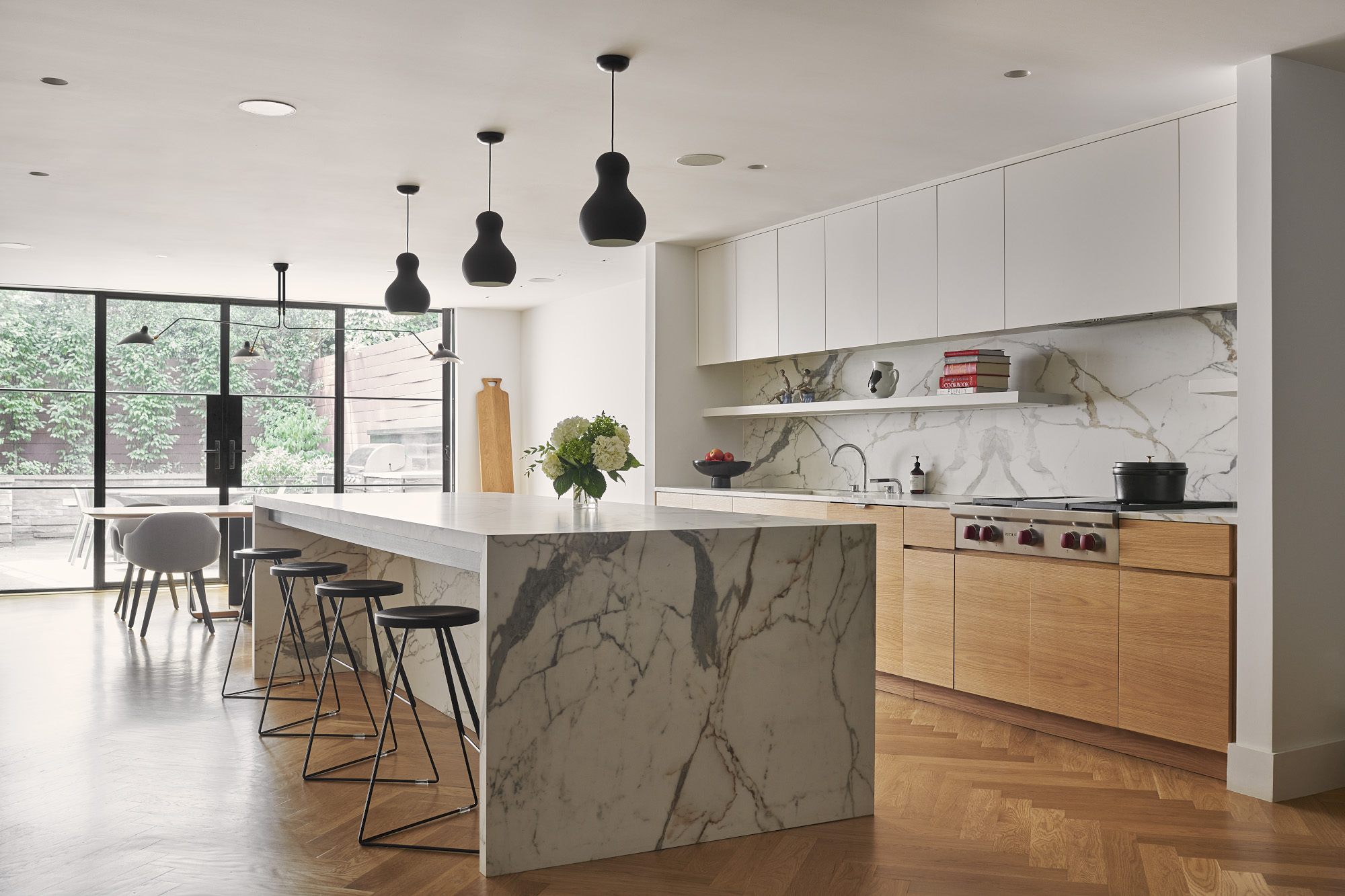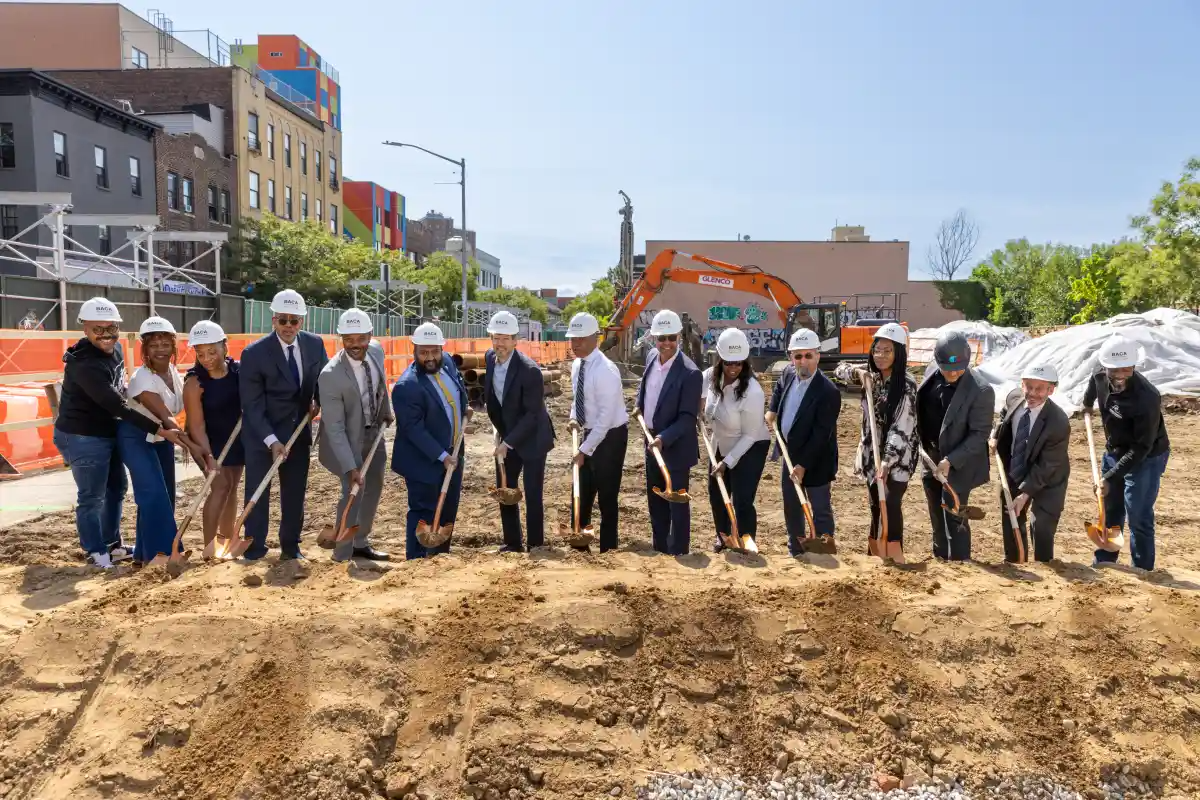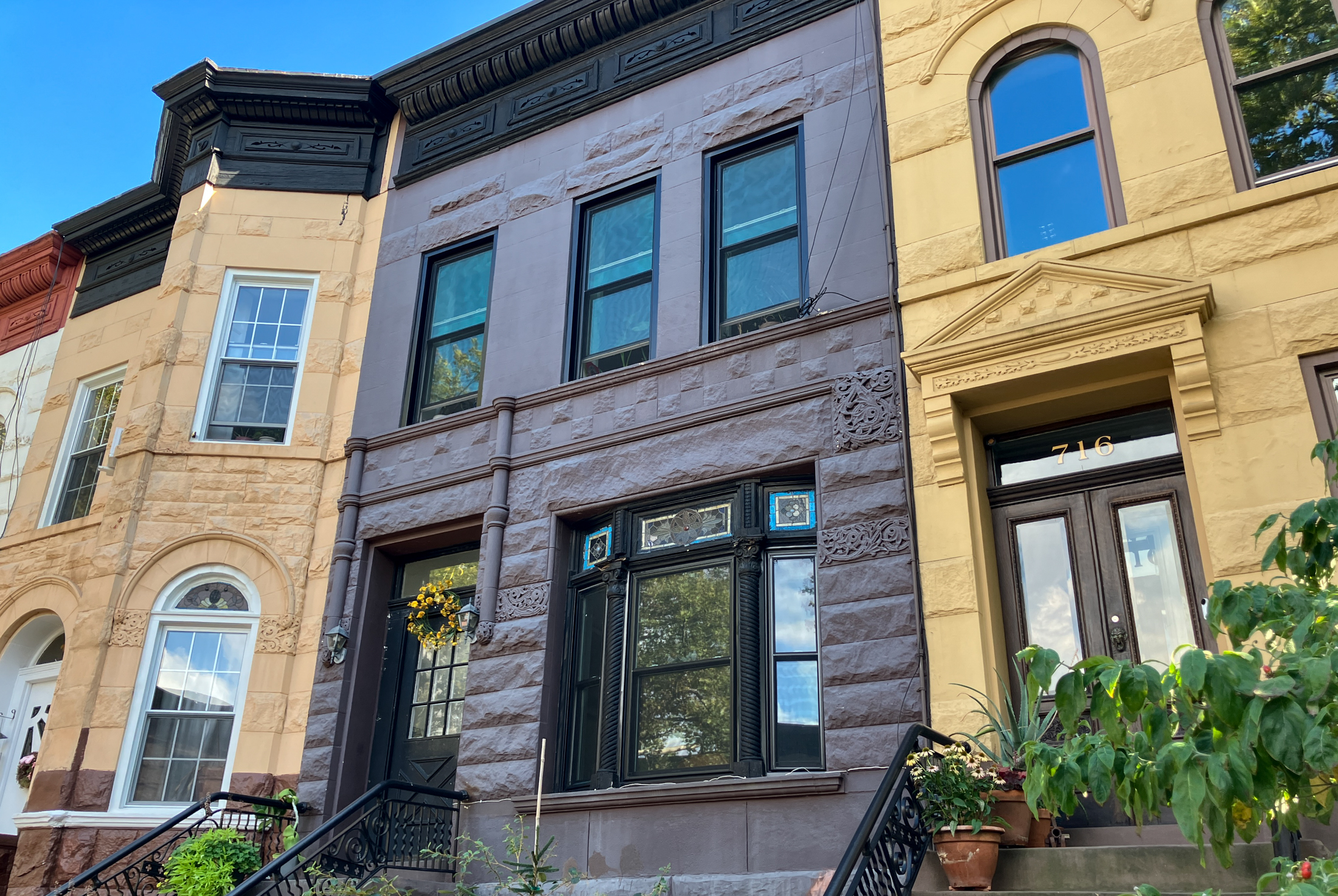House of the Day: 808 Lincoln Place
While this three-story limestone house at 808 Lincoln Place in Crown Heights has some beautiful original detail to recommend it, it also appears (from the photo of the kitchen) that it’s not exactly in top-of-the-line form. The asking price of $795,000 probably would have worked a year or even six months ago, but we doubt…


While this three-story limestone house at 808 Lincoln Place in Crown Heights has some beautiful original detail to recommend it, it also appears (from the photo of the kitchen) that it’s not exactly in top-of-the-line form. The asking price of $795,000 probably would have worked a year or even six months ago, but we doubt it will fly today. While there aren’t a lot of comps to look at, PropertyShark does show that the similar house next door, 806 Lincoln Place, traded for $600,000 in December 2006. Anyone know of other recent sales close by?
808 Lincoln Place [Corcoran] GMAP P*Shark





NOP, you certainly have a way with words. I can see “the Rasp”, and picture you and your brother shivering in the office, staring at the clock. I really hope you string together these tales into a memoir or a screenplay. It would be fabulous. You have a great talent.
You will be happy to hear that many of the doctors and dentists’ offices still remain in the neighborhood. The names and accents may be Haitian French or West Indian English, but they are here along New York, Brooklyn and St. Marks Avenues, among other places. They seem to have disappeared from the large apartment buildings, and considering how hard it is to have a single practice today, it’s encouraging to see that they still exist. They may be mostly the old guard, but they are part of the glue that has kept this neighborhood together. I hope more younger professionals open offices in the neighborhoods, they are needed. One of my doctors was on Eastern Parkway, until she moved to a larger, multi-doctor office closer to her hospital affiliation.
I’ve been in about 4 of the large houses on St.Marks between Brooklyn and Kingston, and all were doctor’s practices at one point, hence the street being called “Doctor’s Row”. All were configured with the office on the ground and/or parlor floor, with the doctor and family living in the rest of the large house, quite comfortably and lavishly, too, as benefits their station in earnings and the community. One house had been a practice up until only a couple of years ago, and was still filled with medical furniture – examination tables, scales and such.
Thanks for another wonderful tale.
Brownstoner:
The ground-floor doctor’s office in this house reminds me how common such places were in Crown Heights during the 1950’s when I grew up in the neighborhood.
Back then, Crown Heights was saturated with doctors and dentists. Every row-house block had several, and the big apartment houses on streets like St. Marks Avenue and Eastern Parkway were covered with their brass plaques affixed next to the lobby doors or at the entrances to professional suites that were accessible directly from the street.
My family’s pediatrician was a woman in an office at the “garden level” of a house off New York Avenue. Our dentists were in houses on Brooklyn Avenue and Eastern Parkway. My sister’s surgeon was in a house he shared with his brother, another surgeon, on Eastern Parkway. And our orthodontist was in a mansion on New York Avenue, a big limestone number where he gave annual holiday parties for his adoring fans: all the neighborhood ladies who’d have their children’s teeth straightened and proclaimed him an “artist.”
My favorite was Dr. G., who had a professional suite in an apartment building along Brooklyn Avenue. He was the old-fashioned general practitioner with a pencil-thin mustache and degrees from a Mid-Western university. A throw-back to the leather-satcheled G.P. who made house calls. Gentle and genial, seeing us kids through our coughs and scarlet fever. (Do people get scarlet fever any more? Somehow it sounds very old-fashioned.)
Dr. G’s office was entered through a heavy wood door with a stained-glass window, in keeping with the building’s Tudor style. The door was always unlocked for walk-ins from the neighborhood. His nurse had flaming red hair and was such a terrible smoker that her voice scratched like sand paper (“The Rasp,” my father called her). But they were a real team, making kids feel welcome when they just turned old enough to visit the doctor’s by themselves. (A big moment for kids, only slightly less nervous-making than going to the dentist’s for the first time alone.)
What I remember most about their office was that it was freezing cold, the air-conditioning going full blast at a time when most people didn’t have any. My brother and I’d sit on the reception room’s sofa shivering as much from the cold as from dreading being examined, listening to The Rasp hack into the phone, trying to distract ourselves with comic books, but keeping our eye on the clock over her reception desk, ticking off the minutes to our booster shots. The reward at the end of our ordeal: a stick of licorice.
Our pediatrician was among the first harbingers of the neighborhood’s change. During a visit, she pulled out a brochure for the Ebbetts Field Apartments, which at the time promised a middle-class enclave nearer the park. She was moving her office she explained, although she hoped we’d still visit. (I understand these apartments have declined. At the time they opened, however, there were a number of doctors, teachers, and other neighborhood professionals and their families living there.)
One by one, all our doctors and dentists moved away. Only one seemed to hold on at his original location: the orthodontist, whose Cadillac was still visible in his driveway several years after my family left.
Dr. G. also lasted for a while, consolidating his practice with several other doctors in a free-standing office on one of the side streets. For a middle-class kid, it was something of a shock to visit him at his new location. The waiting room felt like a hospital, with bawling kids and their parents rushing around.
I’d come back to the neighborhood after several years away, prefering to see him rather than my family’s new doctor in Manhattan. He greeted me warmly, re-introduced me to The Rasp (holding fort at the entrance to the clinic), then ushered to me to his office.
There he winked and said, “Don’t tell anybody, but I’ve decided to move on.”
More than any other moment, this visit to Dr. G. came to represent the end of Crown Heights as I’d known it. And I wouldn’t go back to my old neighborhood until many years later.
Nostalgic on Park Avenue
If it is the same tenant that I remember, it is a female young professional “newcomer” paying a little under market rate.
Depends on what shape the house is in. States the mechanicals are new, that’s a plus. There’s a tenant on top floor, renting month to month and a practice on the garden level (are both tenants staying put?)
Also, the Cocoran overpricing factor. I say closer to 675k.
Sounds about right – very low $700’s.
Well, the “typical” 10% cut off of ask gets you down to $715k
I think 700-720k would be a little bit more reasonable.
How much rental income do you suppose the doctor’s office brings in?
This is the kind of thing that would be plenty enough space for my fiancee and I, even with just two floors. If we could get the price down a bit more, and supplement it with income from the rental, we could afford to do repairs/restoration on the interior.
If it’s not worth $800k (which I agree), what do you guys think it’s actually worth?
Price too high, House too dull.